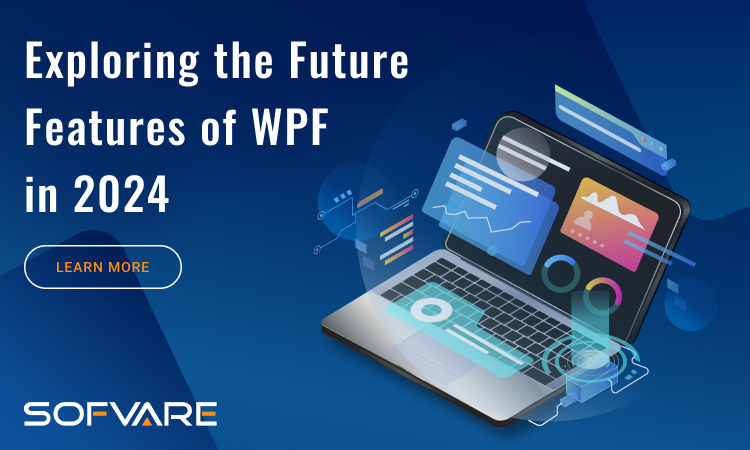Exploring the Future Features of WPF in 2024
As we stand on the cusp of a new era in software development, the future of the Windows Presentation Foundation (WPF) holds exciting promises and innovations. WPF, a stalwart in creating rich desktop applications, is gearing up for a transformative journey in 2024. In this article, we delve into the anticipated features that will shape the landscape of WPF development, offering developers and businesses a glimpse into what lies ahead.
Enhanced Performance for Seamless Experiences
One of the primary expectations for WPF in 2024 is a significant boost in performance. With the ever-increasing demand for smoother and more responsive applications, developers are eagerly awaiting improvements in rendering speeds and overall efficiency. The future iteration of WPF is anticipated to introduce optimizations that minimize lag and enhance the user experience, making it a more compelling choice for high-performance applications.
Adaptive UI for Diverse Platforms
As the digital ecosystem continues to diversify, developers are increasingly tasked with creating applications that seamlessly adapt to various devices and platforms. WPF is expected to address this need by incorporating features that enable the creation of adaptive user interfaces. Imagine a single codebase that effortlessly adjusts its layout and design to suit both desktop and mobile environments. The future of WPF development may well bring us closer to this reality, streamlining the process of building cross-platform applications.
Incorporating AI for Intelligent User Experiences
Artificial Intelligence (AI) is no longer confined to the realms of science fiction; it is a tangible force driving innovation in software development. WPF is poised to leverage the power of AI to enhance user experiences. From predictive analytics to intelligent recommendations, the integration of AI into WPF applications in 2024 could open up new possibilities for developers to create more personalized and intuitive interfaces.
Modernized Design Tools for Streamlined Workflows
In the fast-paced world of software development, efficiency is paramount. WPF in 2024 is expected to introduce modernized design tools that streamline the development workflow. From enhanced visual designers to improved debugging capabilities, these tools aim to empower developers to create sophisticated applications with greater ease. The goal is to reduce development time without compromising the quality of the end product, making WPF an even more attractive choice for developers.
Expanded Support for 3D Graphics and Animation
The demand for visually stunning and immersive applications is on the rise. In response, WPF is anticipated to expand its support for 3D graphics and animation in 2024. This could enable developers to create more engaging user interfaces, incorporating lifelike animations and three-dimensional elements. Such enhancements not only cater to the aesthetic preferences of users but also open up new avenues for applications in industries such as gaming, simulation, and virtual reality.
Security Reinforcements for Data Protection
In an era where data security is a top priority, WPF is likely to introduce features aimed at reinforcing the security of applications. From encrypted communication protocols to advanced authentication mechanisms, the future of WPF development may see a heightened focus on safeguarding user data. Developers can expect tools and libraries that make it easier to implement robust security measures, ensuring that WPF applications meet the highest standards of data protection.
Cross-Platform Compatibility with .NET MAUI Integration
With the advent of .NET MAUI (Multi-platform App UI), the .NET ecosystem is taking a significant step towards unified cross-platform development. In 2024, WPF is expected to integrate more seamlessly with .NET MAUI, allowing developers to leverage their existing skills to build applications that run on a variety of platforms. This integration could lead to a more cohesive development experience, enabling developers to target multiple platforms with a shared codebase.
Community Collaboration through Open-Source Initiatives
The strength of any development framework lies in its community support. WPF’s journey in 2024 is likely to involve increased collaboration through open-source initiatives. By fostering a vibrant community, WPF can benefit from diverse perspectives, rapid issue resolution, and the contribution of valuable extensions and plugins. This collaborative approach ensures that WPF remains a dynamic and evolving framework that caters to the ever-changing needs of developers.
Conclusion
As we peer into the future of WPF development in 2024, the landscape appears promising and innovative. Enhanced performance, adaptive UI, AI integration, modernized design tools, expanded 3D graphics support, fortified security measures, cross-platform compatibility, and community collaboration are key aspects shaping the evolution of WPF. Developers can look forward to a toolkit that not only meets contemporary demands but also anticipates future trends, ensuring that WPF remains a relevant and powerful choice for creating compelling desktop applications. The journey into 2024 is an exciting one for WPF enthusiasts, filled with the potential to redefine the way we approach and experience application development.

